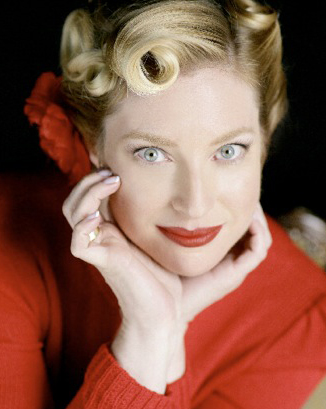
The Modern Butlers’ Journal volume 8, issue 2
International Institute of Modern Butlers
Message from the Chairman

- “Ice formed on the butler’s upper slopes.” Plum in Pigs Have Wings.
Letters to the Editor

Have you seen the recent British TV series, Downton Abbey? It has been a great success in the UK and has just been broadcast on
Italian TV, too. It portrays the life of a large mansion in the pre-First World War England with all the downstairs and upstairs dramas. It has beenwritten by the same author of Gosford Park , Julian Fellowes, and it certainly catches the audience’s attention. However, in my view, there are a few too many “dramatised” rivalries and plots amongst the domestic staff…although we know how certain members of staff can be that mean, but they normally do not last for long once the butler comes to realise the sort of “sneaky” people he is dealing with.
Let us hope that this re-born interest on period dramas, with such a detailed description of the private service lives and roles, with a strong focus on the butler of course —who, in this series, comes across as the solid point of reference in the house—will also bring a renewed interest in the butler figure, too, and to more and new job opportunities! Giovanni Lodigiani
Ed: Indeed! As for the excess amount of dramas, your point is well taken, although the series would no doubt be most boring to most viewers if it had no drama in it!
Greetings from HOTEL32, a “hotel within a hotel” on the top floor of the Monte Carlo in Las Vegas. I have read your Modern Butler Journals for quite some time and enjoyed them very, very much as I am a hotel butler. Is there some sort of membership available with The International Institute of Modern Butlers? Kindest regards, R. Joel Heidtman
Ed: Glad to see butler service is available in the Monte Carlo. Yes, membership is available.
Butlers in the Media
This is very sad, really, but 100% predictable. Nobody wishes this on another individual—being vilified in the media—especially when it is the kind of low grade rags like London’s Sun and the Daily Mail that will turn any plus into a minus—but the end result of betraying confidence as a butler is this kind of treatment. The comments from readers show that once respect has gone, it takes a definite effort to regain it over a period of time. Please take note anybody who feels tempted to cross that invisible line. If Mr. Burrell be reading this, it is not too late to make up the damage and walk back up the road…feel free to contact us.
On a more upbeat note, and talking of Downton Abbey being in the public consciousness, a well done account, We English butlers are in demand – but it’s not like Downton Abbey any more, about a modern day butler can be found in the Guardian (England). The last line was quite pithy: “My job probably hasn’t changed much since the 19th-century, other than the fact I carry two BlackBerrys instead of tails,” but quite a few pearls of wisdom, and interestingly, and explanation of why Russians and Chinese appreciate the butler figure.
Also interesting is the general tenor of the 97 comments on the article, providing a window into the general Web-going public’s ideas of and attitude towards butlers today. Probably 85% were negative and gleeful, even vulgar. But 30% were hung up in the idea of being obsequious. They have no concept of dignity, and it is unfortunate that the butler being interviewed did not communicate this directly, although it is obvious from the article that he does act with dignity. As covered in Remains of the Day, during the staff dinner, dignity is key to being a butler.
As one person stated, “Sadly the misanthropes [commenting] can’t refrain from throwing poo at everything that’s written here. If Santa wrote an article, there’d be comments from them like ‘Christmas is a tool of oppression by the working classes’ and ‘Tories are going to abolish Christmas, because they’re all racist paedos.'” Another said, “I wouldn’t worry about all the negativity you see in the comments. They’re very unhappy people who use the internet to attack others in ways they never would in real life. It makes them feel better for a short while.”
And one had an interesting comment about the apparent subservience of British butlers: “You only think you’re walking all over him. In fact he’s walking all over you, it’s just that you’re so quartz-brained and crass you don’t realise that he thinks of you as a sort of amiable pet or an idiot child and that’s why he is indulging your self-delusions. That’s rather the point of Jeeves and Wooster isn’t it, or is that another thing that flies over your head?” Well, musings aside, it is worth remembering that the drama of real life is not necessarily the same as drama on the silver screen or flat-screen TV.
We have butlers in hospitals as a slowly developing market that is perhaps best done in a low key fashion, judging by the letter written to the editor of the New York Times by one of their readers, a doctor, after reading the front page article, Chefs, Butlers, Marble Baths: Hospitals Vie for the Affluent. “Repugnant. Reprehensible. Show the photographs of the luxury hospital suite or the guest service desk to the poor man or the working-class woman who can’t pay for medical care, inpatient or outpatient. Then show the menu to the patient who is too ill to eat. Medicine has been hijacked by business.” There is no reason that hospitals should not offer superior service to those who can afford it, as with anything else in society. However, resentment will run high if too many people suffer at the hands of a small minority, as many a civilization’s elites have discovered through the ages. We do need to take responsibility for our fellow man, or the inevitable implosion of society is guaranteed.
Then we have those offering interesting services hanging on the coattails of the superior service “butler,” as stated in the article Brand Butler—all good for the profession, in the way that it keeps our profession up front and center as providers of superior service. In this case, we have perfume butlers at some Rosewood hotels, and tartan butlers for those who want to trace their Scottish roots.
Institute member, Giovanni Lodigianni ,was featured on two television spots in Italy recently, promoting the private service butler and the hotel butler.
Her Nobbs is no Nibs Talking of Downtown Abbey (yet again), a recent movie, Albert Nobbs has a butler in it of the same name —or so the movie critics repeatedly claim. In actual fact, Albert Nobbs is a waiter (and also covers bellman/porter), not a butler, and keeps saying so herself. She, or I should say, “he,” has quite a few of the characteristics of a butler, in terms of the restraint, but the self-effacing and irrational determination to self-implode in pursuit of an illogical dream leaves much to be desired.
In case the title does not make much sense (because it is written from Brit to Brit), “his nibs” is early 19-century slang, as in “His Nibs,” itself modeled mockingly after “his honor” and referring to an employer or superior, with additional meanings of a self-important person and a shabby, genteel person, “with no means but high pretensions.” It relates to British university slang for the head of a college, with “nob” referring to “head,” based on its meaning as a “projection from a hill,” as well as the variation “His nobship,” perhaps coming from “nabob” (a person returning wealthy from India) and “nobleman.”
One variation, dating back to the same time period, records that London Clubs had a policy of “no Irishmen,” which was communicated discreetly in Latin with “Adeste, nisi Hiberniae” (no Irish here). This was abbreviated to “Nis Hibs” and over time inverted to refer to the members of the clubs holding these policies, and reflected in the words by forming a spoonerism (inversion of the initial letter of two words): “His Nibs.” Now, this is the kind of thing that fascinates some British butlers, and I apologize if it bored.
Placement
Three positions need to be filled. If interested and qualified for any of them, contact the Director of Placement.
- An experienced butler/estate manager with hospitality experience, to be the general manager of a luxury boutique hotel and spa opening 1,200 meters above sea level on 80,000 square meters of grounds with a further 1.2 million square meters to be a botanical garden outside San Paulo, Brazil. Intended to be a showcase for spa and culinary delights as well as nature, the GM needs to run the hotel like a private estate,. To the same standards. Also needs to speak English as well as Portuguese, or if not the latter, Spanish or Italian so he can learn Portuguese more easily. Professional remuneration.
- One of the premier resorts in the Maldives is looking for an experienced Head Butler managing about 35 butlers. who will soon be receiving three months of training. 42K and 42 days off a year in three periods.
- The Institute is looking for an experienced Indian butler living in India or willing to return home, to take care of training assignments in that country. Needs to have some experience with training and also management positions.
Cigars
Introduction
When doing Cigar Training, students will often ask me why they need to learn about cigars if they don’t smoke. The simple answer is that if one does not smoke, one will know little or nothing about cigars and therefore have more to learn. The longer answer is that cigars are a hand-made luxury item – one that requires careful handling and storage. If you work for someone who does smoke, or perhaps keeps them to offer to guests, then you will need to take care of their cigars in the same way that you might be entrusted with the care of antique furniture, valuable paintings or fine china. A cigar collection may be worth a great deal and can be irretrievable damaged in less than a fortnight. Perhaps the best answer of all is that cigars are quite simply fascinating. While I don’t smoke, I do appreciate the history, mystique and anecdotal wealth surrounding the industry.
History
There is evidence of tobacco use dating back almost 2 millennia and upon his arrival in the Americas, Christopher Columbus found that it was in widespread use all over the islands of the Caribbean. There is no evidence to support the theory that tobacco use had its origin in Cuba, but it was certainly already in use there by the time Columbus landed. The sailors began to use tobacco themselves and soon the practice spread to Europe, initially via Spain and Portugal. The introduction of tobacco to France is attributed to Jean Nicot, the French ambassador to Portugal who lent his name to ‘nicotine’. Incidentally, the word ‘cigar’ comes to us via the Spanish Cigarro which in turn is either from the Mayan-Indian word ‘sikar’ for smoking, or the Mayan ‘sicar’ meaning “to smoke rolled tobacco leaves”. Tobacco use spread to Italy and only later to England after Sir Walter Raleigh’s voyages to the Americas. The British initially preferred to smoke their tobacco in pipes, but high taxation limited its use.
In 1592, the Spanish galleon San Clemente delivered 50 kg of tobacco seed to the Philippines to be distributed by Roman Catholic missionaries and by the early 1700’s tobacco was being cultivated commercially in America.
While some believed tobacco to have medicinal value, there were those who resisted, most notable being Phillip II of Spain and James I of England. In fact the segregated smoking sections we have today in bars and restaurants are nothing new. Smoking cars on trains and smoking salons in hotels and clubs were the norm by the 1860’s. Ladies generally did not smoke and it was not considered proper to smoke in their presence. The men therefore would retire after a meal and smoke apart from their female dinner companions. The practice of smokers subjecting non-smokers to their unpleasant habit is a 20th century phenomenon and one which thankfully died out within a few decades.
Until the invention of the cigarette rolling machine in the 1880’s, hand rolled cigarettes where a luxury item with the result that cigars were far better known than cigarettes – almost a complete reversal of the situation we have today.
Next month we will continue our study with tobacco agriculture before moving on to tobacco maturation and cigar rolling.
by Amer Vargas
From the harvest to the winery
In the next article, we will deal with the final steps to red wine production.
Please subscribe




